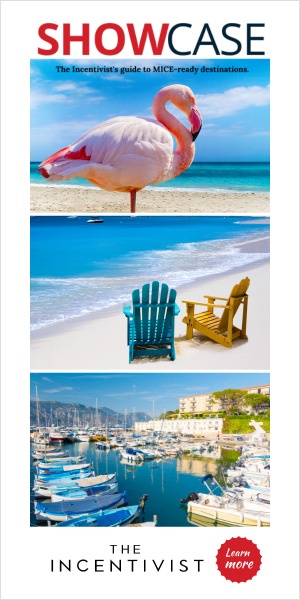Croatia has become one of the most popular travel destinations in Europe, and it is easy to see why. With its stunning coastline, crystal clear waters, charming medieval cities, and rich cultural heritage, Croatia offers an unforgettable travel experience that attracts incentive groups from all over the world.
The country’s coastline is dotted with picturesque towns and cities, such as Dubrovnik, Split, and Zadar, which offer breathtaking views of the Adriatic Sea. In addition, Croatia is home to over 1,000 islands, each with its own unique charm and character with the most popular being Hvar which is known for its stunning beaches, crystal clear waters, and vibrant nightlife.
Dubrovnik, also known as the Pearl of the Adriatic, is one of the most popular destinations in Croatia. The city’s well-preserved old town, with its stunning architecture and fortifications, is a UNESCO World Heritage site that attracts millions of visitors every year. This well-preserved medieval city dates back to the 13th century and is surrounded by walls that are almost 2 kilometers long. One of the iconic experiences in Dubrovnik is walking these walls which offer fantastic views of the city, hundreds of red rooftops within the Old Town, and the sea. The walk takes about 2 hours and can be accessed from multiple points. In addition to wandering the narrow streets and charming squares, there is also a wide range of museums, galleries, and cultural events that are worth exploring.
Of course, dining and shopping are a large part of the experience of being in any new destination. The cuisine of Croatia is a blend of Mediterranean and Central European influences. Specialties such as a black seafood risotto colored by squid ink, different types of roast lamb, beef or pork, and grilled meat sausages can be enjoyed in privatized venues such as the Lovrijenac Fortress or in smaller traditional restaurants found throughout the old town. Some of the best wineries in Europe are found in Croatia and they produce a range of high-quality wines and pastries such as strukli, fritule, and deep-fried dough with rum, citrus, and raisins typically finish a meal.
Popular gifts for those on the trip include filigree jewelry of gold or silver, some with pearls or coral, Pag lace from the namesake’s island, hand-painted ceramics with vibrant colors and intricate designs, and items that are made of the lavender that grows in fragrant fields of the countryside. Being a Mediterranean country, wine and olive oil are also things to sample or take home.
Two Leading Hotels of the World, the Villa Dubrovnik and Sun Gardens Dubrovnik, are nice options for groups. The Villa Dubrovnik has 55 guest rooms while Sun Gardens has just over 400 rooms. (The Villa Dubrovnik will be closed late 2023 to mid-2024 for renovations.) Both offer stunning views of the Adriatic Sea and nearby islands. The hotels have pools, spas and a range of other amenities. Neither are in the city itself, but both are close enough to quickly get to the sights and experiences that have been planned. Two Adriatic Luxury Hotels and Hilton’s historic Imperial Dubrovnik are closer to the historic sites and are also options that are popular with groups.
Great day trips from Dubrovnik are a must and can be enjoyed by boat or by car. Kolocep Island, located just off the coast, is a small, picturesque, car-free island, known for its natural beauty and some of the most beautiful beaches in the country. Getting there by speedboat is an exciting option.
Vintage cars, on the other hand, can transport the group through the countryside to lavender fields or to any number of popular olive oil farms. This is a great way to experience the sights and sounds of the area while supporting small businesses and sustainable agriculture practices.
While in Croatia, groups often start their visit in Dubrovnik and then head North to Split and the island of Hvar. Split can be reached by car, plane, or ferry. Traveling by boat has the benefit of the scenic coastal views and takes between four to eight hours while a car typically takes about three to four hours.
Split is the country’s second-largest city and it is home to the Diocletian’s Palace, a 4th-century Roman palace complex that is a fascinating site to explore. Wander through its narrow streets to visit historical buildings like the Cathedral of Saint Domnius, and soak up the atmosphere of this living, breathing ancient city. Split’s waterfront promenade, called Riva, is a lively hub of activity. It is lined with cafes, restaurants, shops, and benches where you can relax and enjoy stunning views of the sea. Taking a leisurely stroll along Riva is a great way to take in the city’s vibrant atmosphere.
Le Meridien Lav is about a 20-minute drive to the historic area of Split. It has good access to the city while also offering a beach, marina, and spa to enjoy after a day of sightseeing.
Hvar is one of the most beautiful islands in the Adriatic and is just one hour by ferry from Split. Hvar Town, the main settlement of the island, is a charming historic town with a rich cultural heritage. It features narrow stone streets, ancient buildings, and a picturesque harbor. The town is home to notable landmarks such as the 13th-century Hvar Fortress and the Renaissance-era Hvar Cathedral. It also offers numerous pristine beaches, both secluded and bustling, where visitors can swim, sunbathe, and enjoy various water sports. Palace Elisabeth is a small but beautiful hotel on the island with stunning coastal views, a pool, spa, and 45 guest rooms.
Croatia is busiest between June and August when coastal areas and islands will be bustling with activity. The shoulder months are still very pleasant but fewer crowds will be found and prices for flights and hotels will be less expensive. Average highs in the summer months are typically in the 80s with lows in the 70s. In the winter months, due to its Mediterranean location, highs are still comfortable, in the 50s and 60s but visiting during these months would not be ideal if the group wants to enjoy the beaches and watersports.
There are currently a couple of airlines that offer non-stop flights from New York to Dubrovnik with a flight time of 9 hours. Of course, European travelers will have much easier access. Access to Split from the US will require a layover.
Croatia’s ancient cities of Dubrovnik and Split enchant visitors with their well-preserved architecture and fascinating historical sites. Add to that the warm hospitality of the locals, delicious cuisine, and a relaxed Mediterranean atmosphere, and Croatia becomes an irresistible destination for those seeking unforgettable experiences.
Thanks to our partner DMC in Croatia, Adria Events.

Shirley Hutchins, CMP, CIS has more than 35 years of experience in the hospitality and MICE industry. In 2020, she founded Andaré Incentives, a comprehensive hotel guide for the luxury travel and MICE markets. It includes listings for luxury hotels around the world as well as sample itineraries, venues, and activities for incentive travel programs around those hotels.
































